Creating something remarkable with unlimited ingredients is a happy accomplishment. But creating something remarkable with humble scraps that others would discard without regret – that to me is even more gratifying. I was born in this land of plenty, but as a child of immigrants I have a genetic appreciation for frugality. In modern America we can buy super-size quantities of food very cheaply, and we also waste 40 percent of it. But those of us raised in an old-school food culture know it’s much better to spend the same money on higher quality food – less of it – and use every last bit.
Case in point: What to do with a drawerful of cheese remnants from a summer of casual eating and entertaining? Some are dry, some maybe a wee bit moldy. Do I transport them to the trash in disgust? Heck no.
I unwrap the forgotten knobs of cheese, generously slice off and discard any moldy bits, cut off rinds, and throw the motley survivors into a food processor with a clove of garlic, a splash of white wine and some good grindings of black pepper. Blend it well, and I have “fromage fort” – literally “strong cheese” – an ingenious creation by the French to make a creamy, garlicky cheese spread out of reject bits. France is a nation that respects cheese, even the old and orphaned.
I first learned about fromage fort a number of years ago watching the delightful Jacques Pepin on PBS. I always loved how Jacques Pepin – all enthusiasm and smiles – was the antithesis of the demanding French chef stereotype. Charming and relaxed in his demonstration, Pepin explained that fromage fort by its nature is different every time.
Here’s what I had – some goat cheese, pecorino, cheddar. Dry vermouth makes a good substitution for white wine when you only need a bit and don’t want to open a bottle. Just add a splash of wine to start. It’s nice to have some soft cheeses along with harder ones – and you can always add a knob of cream cheese if you like. But you really can’t go wrong with cheese, wine and garlic.
If it’s still too chunky, add a splash more.
Looks good to me.
And tastes…mmmmm. Should have opened a bottle of wine after all.
Spread on bread or crackers, it’s a decadent treat. More special than plain old cheese but still simple and rustic.
For a lovely effect, broil until golden and bubbly. The tastes of the cheeses, wine and garlic become more subtle when cooked.
Something awesome for practically nothing – it’s kitchen magic, and you don’t have to be a French chef (or even a chinese grandma) to do it.
Fromage Fort
Years ago I saw Jacques Pepin make this easy spread on his PBS show. It’s an ingenious way to turn those bits of leftover cheese in your refrigerator drawer into something appealingly fresh.
Ingredients
- 1/2 pound assorted cheese (hard, soft, cream, etc)
- 1/4 cup white wine or vermouth
- 1 garlic clove
- Black pepper
- Salt (optional)
- Chopped herbs (optional)
Directions
- In a food processor bowl, add cheese, wine, garlic and a good grinding of black pepper. Process until mixture is creamy. If you have more hard cheeses, you may need to add a splash more wine.
- Add salt or more black pepper to taste. Add fresh herbs and pulse to mix.
- Spread on bread or crackers. Place under broiler until fromage fort gets browned and bubbly, if you like.
Notes
- You can trim mold off hard and semi-soft cheeses – just cut a generous slice off. Moldy soft cheeses should be discarded.
- Fromage fort will store well in the refrigerator for a week or two.
Here’s the link to a printable version.

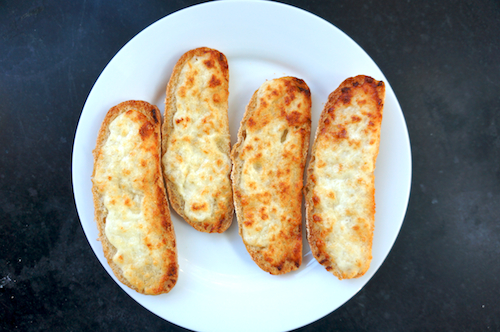
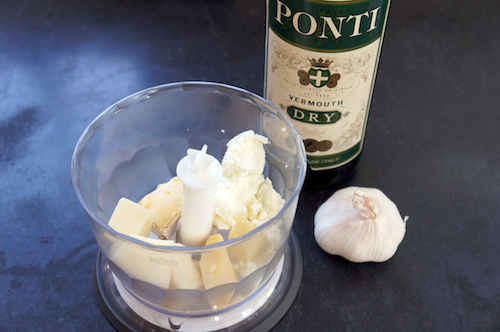
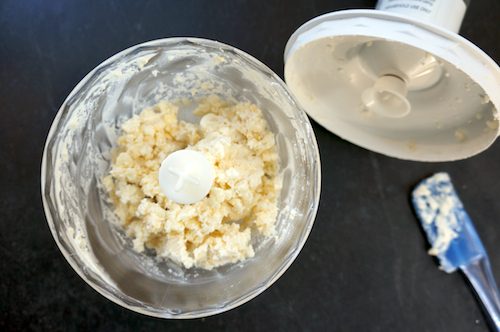

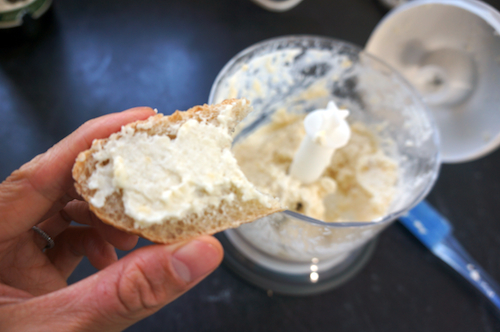

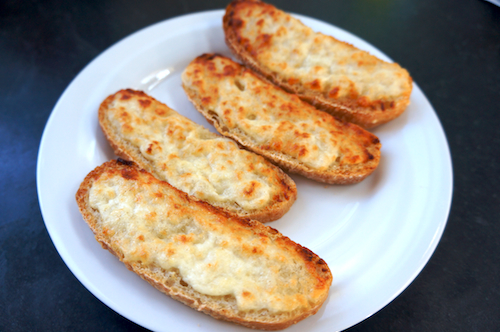



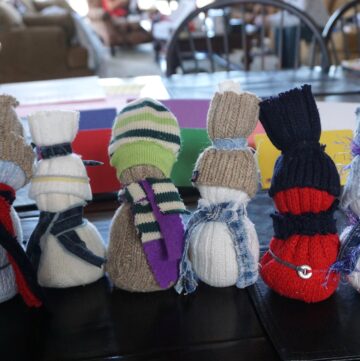
I saw that episode of Cooking with Jacques or whatever it was called back then and have been meaning to make it!!! I hate throwing away good cheese and food, in general. Also, the child of immigrants. I am going to make this as soon as I have enough cheese bits!! Thanks for the refresher!
hi michelle – hope you enjoy it! funny that you saw the show too – it always stuck with me.
I agree wholeheartedly with frugality and buying only what you can realistically consume. The fromage fort is an interesting and appealing concept, although I’m not sure about eating cheese that’s already gone mouldy. If there’s visible mould, then surely the whole cheese would be affected?
hi mm – with hard and semi-soft cheeses (cheddar, parmesan, gruyere, etc), the mold doesn’t penetrate much beneath the surface. the USDA recommends cutting one inch below the surface. of course use a clean knife if you then need to cut another side. soft cheeses with mold should be discarded, as the mold can permeate throughout. thanks for the question!